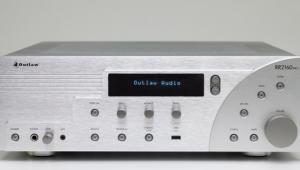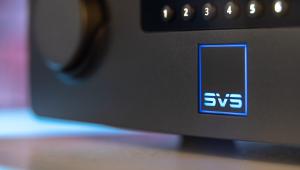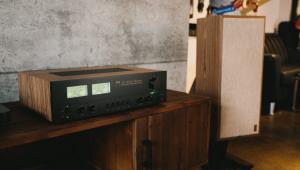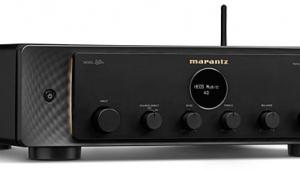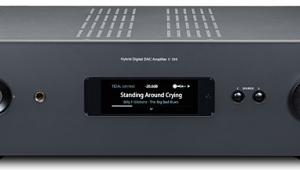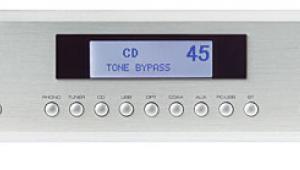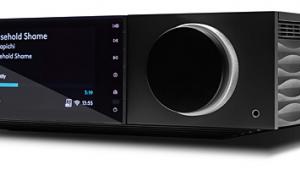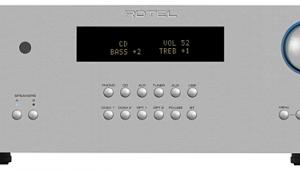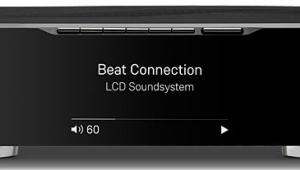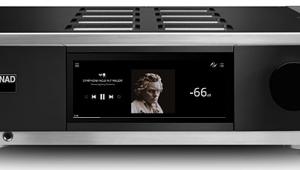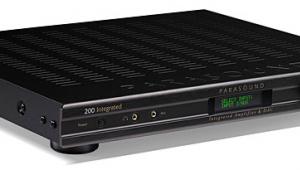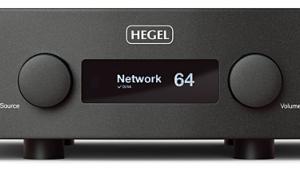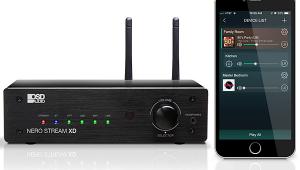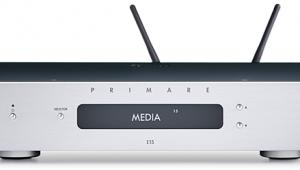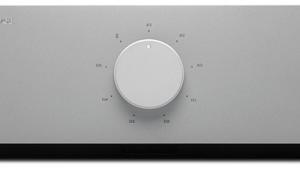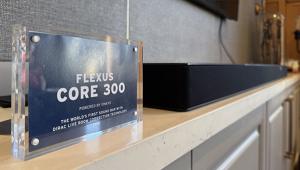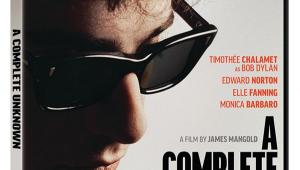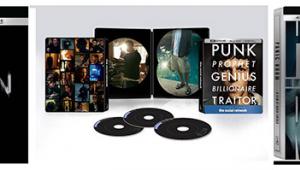NAD C 399 Integrated Amplifier Review Page 2
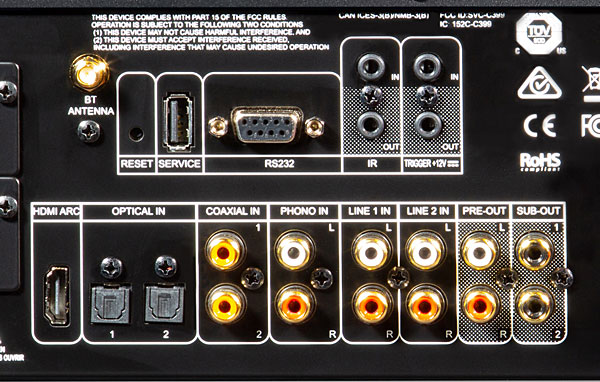
The C 399 comes with NAD's large and able SR 9, a mostly non-backlit remote control. It not only administers volume and standby/on selection for the C 399, but can control many other NAD components.
Setup
I auditioned the C 399 review sample as it arrived—with the BluOS-D module pre-installed. Setup was quick work, although most users will likely walk through a few more steps than I did. (A link to the C 399's all-too-brief manual is contained on NAD's website.) Included with the BluOS-D sample were two antennae, one for Wi-Fi and another for Bluetooth, and a Dirac Live microphone with a USB adapter and a lengthy cord.
I connected the C 399 to a pair of System Audio Saxo 5 powered bookshelf speakers and a JL Audio Dominion d-110 subwoofer via the C 399's single-ended RCA pre-outs and one of its sub outs. To test the C 399's internal amplifier, I connected the C 399's speaker outputs to a pair of Polk audio bookshelves.
I mainly auditioned the C 399 by using the BlueOS app to stream music via Tidal, Qobuz, internet radio, and several connected USB thumb drives. To test the C 399's ARC feature, I connected its HDMI eARC port to an LG OLED TV. My TV doesn't support eARC, so I made do with the older HDMI ARC protocol, which is compatible with eARC.
With everything up and running, I connected the Dirac Live microphone to the BluOS-D's USB port and downloaded the Dirac Live software to my desktop PC. (I did not make the $99 upgrade to the software's broader-bandwidth version.) The software recognized the C 399 on my network, and it led me through the steps necessary to make and store room measurements. Although the software's correction filter is adjustable, I used the default filter profile—as I assume most C 399 users will. I also chose the "tight" seating focus.
I evaluated the C 399 in my bedroom, and due to the irregular shape and resulting acoustical problems in that space, I preferred the sound with Dirac Live engaged. The correction made things slightly surgical, cooler, and a bit thinner, but there was also an improvement in voice intelligibility, bass control, and imaging. However, in a room with acoustical treatments and more favorable dimensions, I might have decided to not use Dirac Live.
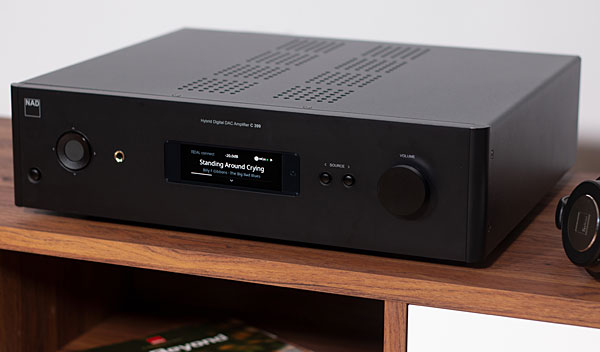
As far as physical build goes, the C 399 provides what's needed and no more. For example, its front panel volume control knob didn't have the solid feel of many competing components. Still, it operated linearly and was sufficiently stepped. While the SR 9 remote control also did the job, its plasticky feel and agglomeration of colored buttons made it resemble something that might accompany a cable TV box or inexpensive A/V receiver.
To many, these shortcomings will be venial. For example, when fitted with the BluOS-D, most of the C 399's functions are controlled through the BluOS app, which Sound & Vision has devoted much ink to. I won't say much about the app here other than that it's outstanding.
Performance
The C 399 offered little in the way of compromise when it came to performance. No matter whether streaming from the internet or from local sources, it presented a large image and as much linear, low-distortion sound as I could have asked for given its price.
With the eponymously named "Wind of Change" (16/44.1 FLAC, Tidal), Peter Frampton's acoustic guitar riffs were generous-sized, warm, and airy. They were also detailed, with even the slightest brush of his hands on the instrument's strings being clearly revealed. Similarly, on the piano ballad "Love in the Dark" from Adele's 25 (16/44.1 FLAC, Qobuz), top notes were clean and the abundance of detail laid bare the singer's emotional delivery and throaty vocal inflections.
The C 399 also impressed with another eponymously named track, the iconic, "Moanin'" from Art Blakey and the Jazz Messengers (16/44.1 FLAC). Upper-register piano notes sounded crystal-clear and their echoes were nicely reproduced. Middle-register tenor sax notes sounded rich and full. The trumpet, with its sharper and more focused tone, came across as metallic and brilliant. The rhythm and pace of the double bass, so fundamental to this track's foot-tapping appeal, was spot on.
While I didn't audition the C 399's internal phono stage, I did take its headphone output for a spin. For many one-box players at this price point and even above, a headphone output represents little more than an afterthought. Listened to using several headphones from Apos Audio and Audeze, it became apparent that the C 399's headphone output will not receive any awards for its detail, transparency, or perceived frequency extension. Still, it nicely drove all of those 'phones and in my book fared better than a number of its competitors. I wouldn't hesitate to use it in a pinch if I had to. Consider that a rave.
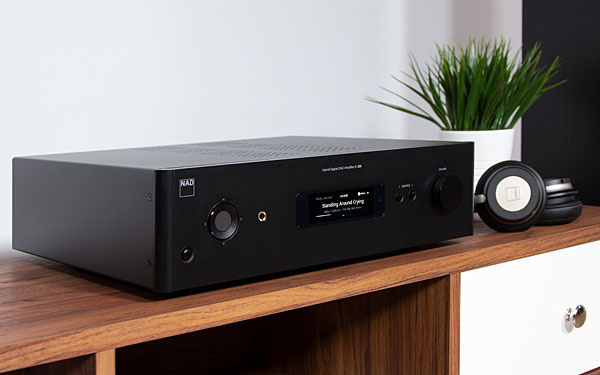
Finally, to demo the C 399's eARC feature (here using only ARC), I watched the period mystery action film Sherlock Holmes: A Game of Shadows. When Holmes, played by Robert Downey, Jr., is confronted by a gang of thugs, they try to restrain him in chains. The C 399 reproduced the chains' high-frequency clinks with air and shimmer. When temporarily scared off by two passing Bobbies, one gang member throws coins at Holmes's feet. As the coins collectively hit the pavement, the sound of each was heard. And when an explosion later leveled a London store, its impact was powerful and the sounds of flames and falling debris were nicely parsed among the mayhem.
My listening impressions encompassed both the C 399 feeding line-level signals to the System Audio speakers' internal amp and a speaker-level output to the Polk Audio passive bookshelf speakers, thus relying on the C 399's own internal amp. I believe that the C 399's clean, low-distortion performance is to no small extent due to the Hypex nCore amplification module. It's tough to directly compare both amps as they are contained in very different products sold at very different times at different price points. Still, with the C 399/System Audio speaker combination many of the aforementioned characteristics were less evident. For example, Adele's voice in "Love in the Dark" suffered from a slight coloration. Also, in the Art Blakey track, piano top notes lost some clarity and sounded slightly distorted, especially at high volumes. My observations are also consistent with what I've heard with other components that use the nCore modules, most recently a pair of DIY amps.
While the C 399 lags behind some of its competitors in terms of aesthetic appeal and build quality, it makes no apologies when it comes to sound quality. For example, on "Moanin'" Simaudio's Moon 280D streaming DAC ($3,000) produced a more "romantic" mid-range bloom than did the C 399. However, its lower frequencies were less extended and not as taught. Also, HiFi Rose's 150B streaming DAC ($4,995) was a bit more forward-sounding than the C 399.
Conclusion
As is often stated, audio product design represents a series of compromises. With NAD's C 399 integrated streaming amp, the company has arguably made smart choices. Its compromises, corporeal and aesthetic in nature, relate to things like its chassis, front-panel display, and remote control. Those seeking audio jewelry will look elsewhere. But for those interested in sound quality, features, the flexibility of a modular design, and, importantly, value, the C 399 handily delivers.
- Log in or register to post comments
